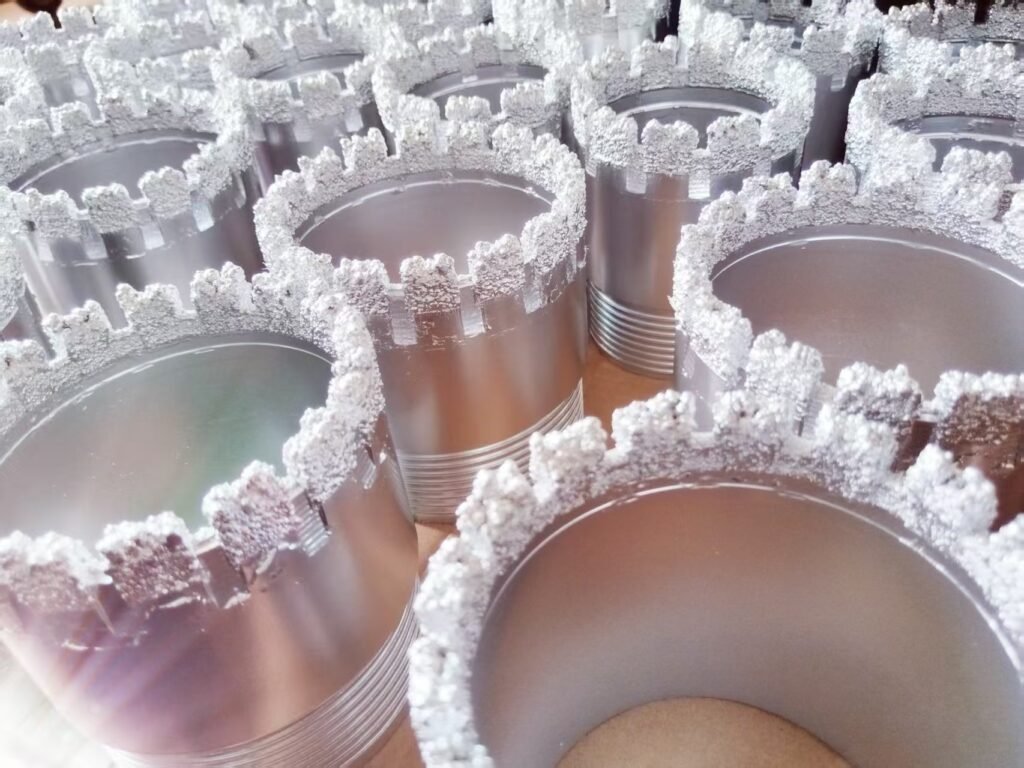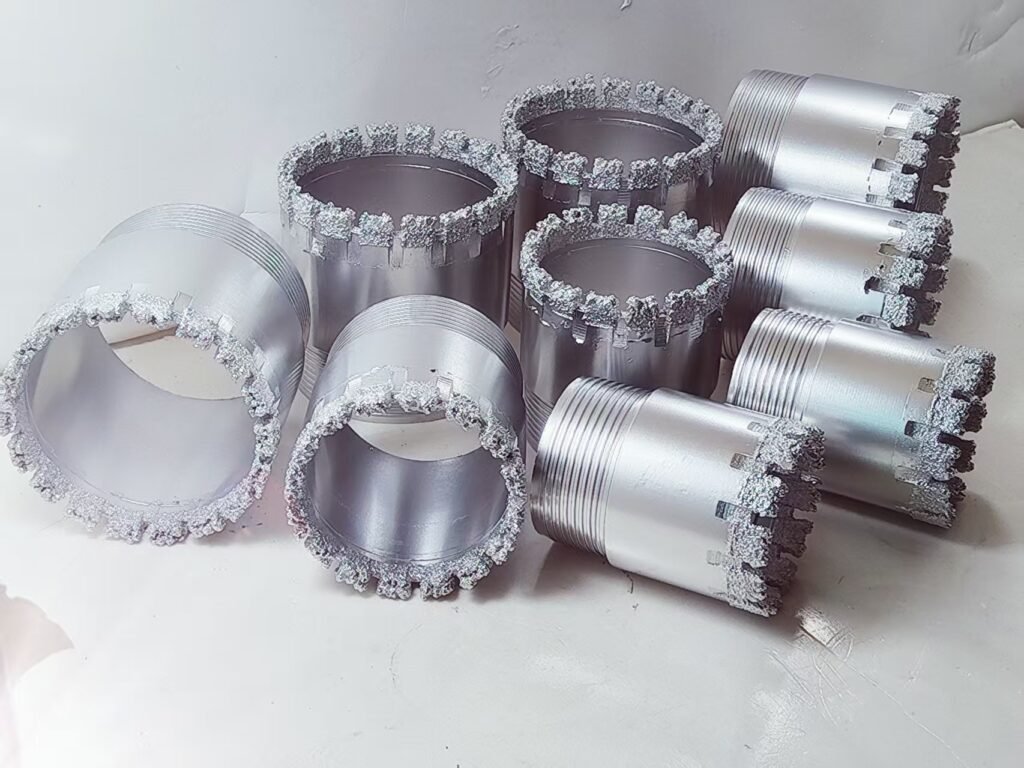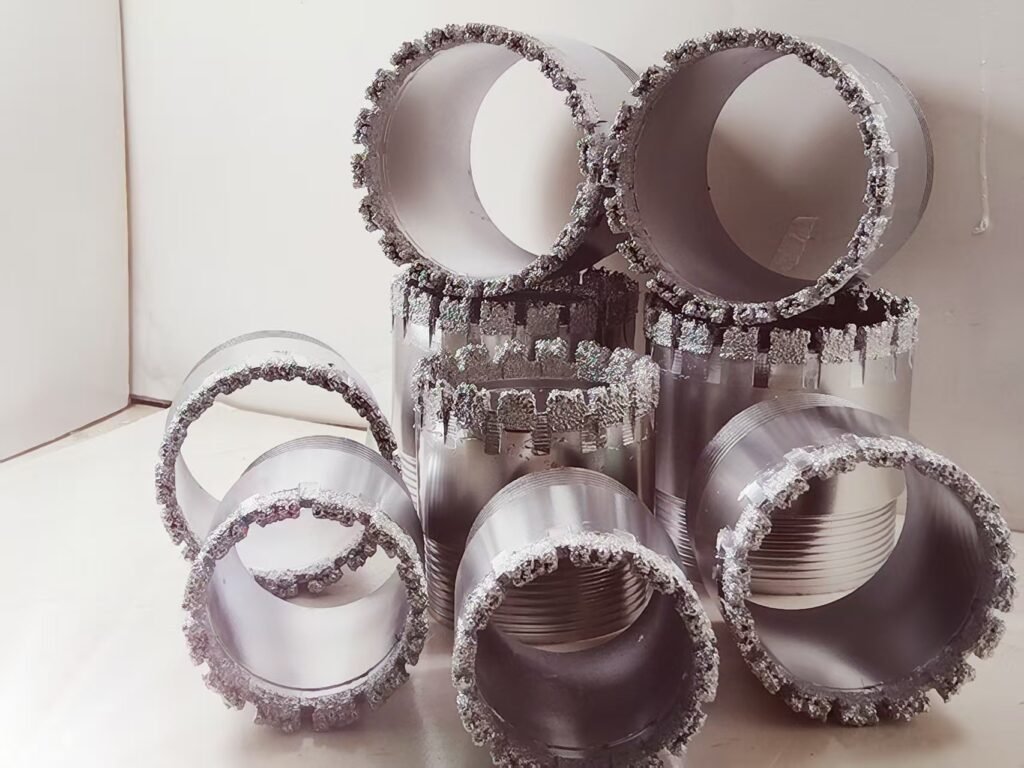By Sicher | July 23, 2025
Changsha — Drilling through hard rock formations like granite and basalt requires precision, durability, and the right tools. Among the most effective solutions for geologists, miners, and construction professionals are electroplated diamond core bits, known for their superior cutting efficiency in abrasive conditions. But with varying rock compositions and drilling conditions, how do you choose the best one? Industry experts weigh in.
Why Electroplated Diamond Bits Excel in Hard Rock
Electroplated diamond bits use a single layer of diamond grit bonded to a steel core via an electroplating process. Unlike sintered or impregnated bits, they offer:
- Sharper cutting action – Ideal for fast penetration in dense granite and basalt.
- Better heat dissipation – Critical in high-RPM drilling to prevent premature wear.
- Customizable grit sizes – Coarse grits (e.g., 30/40 mesh) for fast drilling, finer grits (e.g., 80/100) for smoother finishes.
“For hard, homogeneous rock, electroplated bits often outperform other types because they maintain aggressive cutting without excessive wear,” says Dr. Elena Rodriguez, a geotechnical engineer with over 15 years of field experience.


Key Features to Look For
When selecting an electroplated diamond bit for granite or basalt, experts recommend prioritizing:
- Diamond Concentration & Quality
- High-grade industrial diamonds ensure longevity in abrasive rock.
- Look for uniform diamond distribution to avoid uneven wear.
- Bond Strength
- A nickel-plated matrix provides better diamond retention than softer bonds.
- Bit Design
- Segmented or turbo-style heads improve debris clearance in deep drilling.
- Thin-wall bits maximize core recovery in exploration.
- Cooling Compatibility
- Ensure the bit works with water or air cooling systems to prevent overheating.
Industry-Proven Recommendations
While specific brands vary by region, the following general specifications are favored for hard rock:
- Grit Size: 40/50 mesh for fast drilling, 60/80 for balanced performance.
- Bit Diameter: 1.5” to 4” for core sampling, larger for construction.
- Operational RPM: 500–1,200 (adjust based on rock hardness).
“In Icelandic basalt fields, we use electroplated bits with a turbo segment design—they last 30% longer than standard models,” notes Bjorn Thorsteinsson, a drilling supervisor at a geothermal project.
Common Pitfalls to Avoid
- Using high RPM in fractured rock – Can cause diamond loss.
- Neglecting coolant flow – Leads to glazing and reduced efficiency.
- Mismatching grit size – Fine grits may polish rather than cut in coarse granite.
Final Verdict
For granite, basalt, and other hard igneous rocks, electroplated diamond core bits remain a top choice due to their aggressive cutting and adaptability. Proper selection—factoring in grit size, bond strength, and cooling—can significantly extend bit life and reduce project costs.
“It’s not just about the bit; it’s about matching it to the rock,” emphasizes Rodriguez. “When you get it right, productivity soars.”

